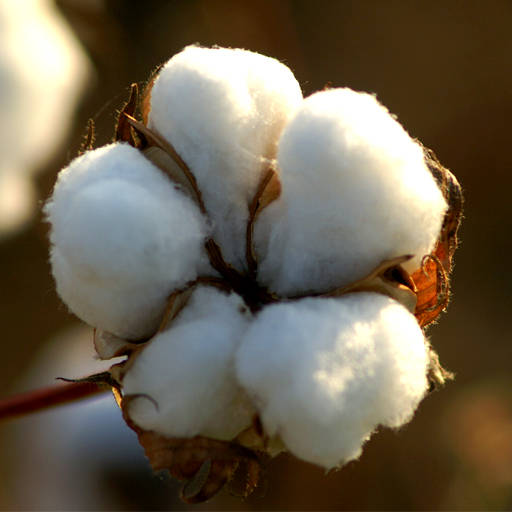Biotechnology is a field in which genetic modifications have been done to improve varieties and to increase the yield of the product. In this area a particular gene of interest have been identified, isolated and transferred to another organism. In case of plants this has been done for many applications as to increase the plant productivity, improving plant resistance against diseases and pests and also to improve the quality of the plant.
In INDIA Cotton is a major commercial crop, but the productivity is found to be very low because it is damaged largely by many pests. The main pest is ball worm. Cotton crop require an intensive use of pesticides. The major cotton producing states include Maharashtra, Gujarat, Andhra Pradesh, Punjab, Karnataka, andMadhya Pradesh. Cotton cultivation had become uneconomic in many parts of the country due to the high cost of pesticides and the low yields. Taking this as a serious problem, government decided to introduce Bt cotton in India in year 2002. Bt cotton offers a promising solution to these serious problems. The Data observed, indicated that Bt cotton offers good resistance to bollworms as well as several other pests. The yields of Bt cotton are found to be higher and the yield increases significantly in all the states, given the good market acceptance of the product.
.Bt Cotton was one of the first genetically engineered crops that was developed by the US-based agrochemical multinational Monsanto, and transgenic Bollgard (Bt) cottonseed varieties were used among farmers around the world. Insect-resistant cotton was first introduced commercially in 1996. In 2002, Bt cotton was grown commercially in the United States, Mexico, India , Argentina, South Africa, China, , Australia, and Indonesia. It is commonly referred to as Bt cotton, because this variety contains a foreign gene obtained from bacillusthuringiensis. This bacterial gene, introduced genetically into the cotton seeds, produces an insecticidal protein (Cry1Ac) which protects the plants from bollworm (A. lepidoptora), a major pest of cotton. The worm feeding on the leaves of a BT cotton plant becomes lethargic and sleepy, thereby causing less damage to the plant. The Bt cotton varieties reduce the pest damage by increasing the resistance of the plant, which leads to increase in the yield and productivity and simultaneously reduce the usage of pesticides which leads to reduction in cost. So this variety became a cost effective alternative to conventional cotton varieties.
A number of studies have examined the significant economic, environmental, and social benefits derived from growing Bt cotton. It has been reported that Bt cotton yield is found to be 80% higher than the non Bt- cotton varieties. The production of Bt cotton in INDIA and other countries, reduces the use of synthetic pesticides on cotton and also gives high yield. Many field trials have shown that Farmers grew the Bt variety, obtained up to 75% more cotton than those who grew the normal cotton variety. It is also observed that Bt cotton requires lesser sprays of chemical pesticide than for normal variety. So Bt cotton shows a positive impact on the farmer’s life because this variety found to be cost effective as it reduce the number of pesticide spray, time saving and improve the cotton variety in terms of yield and production.
But their is a problem of higher cost of cultivation also exists, because of highseed cost and not commensurate reduction in pesticide cost. However, the profit is found to be higher in all the states to the estimated extent of about 80-90 percent on an average.
On March 26th 2002, Bt cotton (the first genetically modified crop in India) was officially approved in India for commercial cultivation. Bt cotton, with the trade name Bollgard-I, developed by Mahyco-Monsanto Biotech Ltd is genetically engineered with the Bacillus thuringiensis (Bt) gene with a protein that is toxic to the bollworm pest.
In India 5% of total crop area is of cotton. For this, much amount of pesticides and money is required. Bt cotton varieties have been developed but the question is of high seed cost and increasing chemical costs. With the increase in population it is important for the farmers to increase their cotton crop production. Bt cotton is playing an important role in enhancing yield. In year 2009 Monsanto and Mahyco scientists detected unusual survival of the pink bollworm (PBW) to the first-generation single-protein bollgard cotton. However, Both Monsanto and Mahyco have defended the new technology – Bollgard II – which they claim have capability to resist PWB. This second-generation Bt cotton containing two Bt proteins continued to be effective in controlling pink bollworms and the resistance issue could be quickly overcome with adoption of Bollgard II in INDIA. Farmers advised to regularly monitor the fields under Bt cotton cultivation. Planting non-Bt cotton refuge is the most important practice the farmers should adopt. Furthermore, farmers have been constantly educated to adopt measures such as need-based application of insecticide spray, cleaning field, season and conditions for cultivation of Bt cotton crop.
Bt cotton is found to be a beneficial crop variety economically, environmentally and socially for the farmers. It shows a positive impact on the farmer’s life. Bt cotton shows reduction in use of pesticide, time saving and also increasing the yield, quality and profit of Cotton crop. To increase the benefits from the technology, the farmers hoping for the reduction in the seed cost and demonstration work on the correct practices to get more profit from Bt cottoncrop production.
